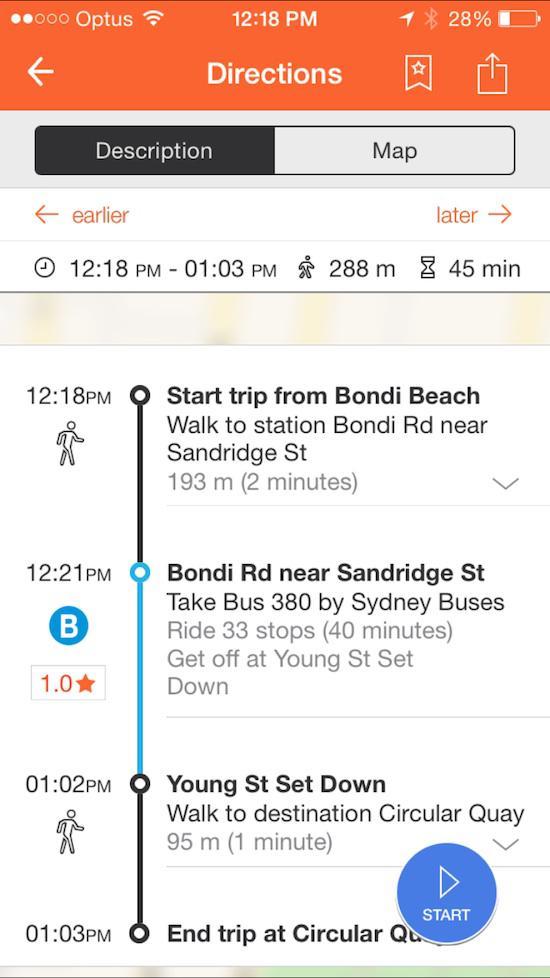Moovit is a free service that combines official and user-sourced information about public transport to help travellers plan routes and provide feedback to transit operators.
It now covers over 500 cities in 45 countries, including Adelaide, Brisbane, Canberra, Hobart, Melbourne, Perth and Sydney, as well as smaller centres starting with Cairns and Townsville.
Moovit provides public transport oriented route directions, and collects crowdsourced information about timeliness, cleanliness, crowding and so on. If Moovit users report that your usual train's airconditioning has failed on a hot day, you might consider varying your journey.
|
|
There is also an optional 'ride mode' that uses GPS to report on the actual progress of a journey. Moovit head of global product marketing Alex Torres told iTWire that this can improve Moovit's accuracy over and above the latest information from transport operators.

As well as helping travellers with their journeys, Moovit provides operators with a dashboard that shows how the public perceives their services.
Asked how rapidly Moovit expects its Australian user base to grow, Torres said "we never predict growth" as it depends on many factors including the quality of data received.
But when Moovit launched in Copenhagen around a year ago, "I thought it was going to be a complete flop," he said. But the number of Moovit users soon reached 50,000 out of a city population of around 550,000.
Australia is a "quite unique" market for Moovit, due to its relatively young population, the high incidence of smartphone usage, and Moovit's ability to serve all the major cities from the get-go.
"I do believe in the Australian market," he said, describing it as "a great fit with our product."

The service is free, so how does Moovit plan to make money? Torres told iTWire that the company has at least two avenues for monetisation.
The first is mobile ticketing, and that will go into testing in certain unspecified countries in the next two or three weeks. This seems a natural fit - if you're using an app on your phone to navigate a public transport journey, it makes sense to be able to pay the fare through the same app, especially if you're visiting the city or only an occasional public transport user.
However, there are signs that NFC-enabled credit and debit cards may eventually replace smart cards dedicated to prepaid public transport (contactless payment cards are already a payment option on most Transport for London services, with over 41 million journeys made that way in the first five months), and that could put a crimp in Moovit's plans.
The other involves alliances with car-sharing and ride-sharing services. One of Moovit's investors is BMW, which operates the DriveNow car-sharing service in Germany and the US, and the company also has a partnership with the Lyft peer-to-peer ride-sharing service in the US. Again, it's easy to see how a trip planner app could direct you to the closest available share car or allow you to book a ride.
The balance between these two sources of revenue will vary "country by country and city by city," Torres told iTWire, adding that Moovit wants to include as many public transport options as possible.
Asked if that could include existing or future taxi booking and payment service providers, he said "we are open to any partners" and that Moovit was conceived as "a robust, democratic platform."
Other plans include adding points of interest so that instead of requesting routes and timings from one address to another or between public transport stops or stations, users could ask questions such as "how do I get from the Westin Hotel to the Australian Open tennis?" or request suggestions about where to meet friends for breakfast.
The idea is to make Moovit a "lifestyle app," Torres said, one with "a greater user experience" than current public transport apps can offer.
The Moovit app is available for iPhone, Android and Windows Phone. Apple Watch will be supported in April, and Android Wear by the end of June.











































